Chrysler 2007 Annual Report Download - page 103
Download and view the complete annual report
Please find page 103 of the 2007 Chrysler annual report below. You can navigate through the pages in the report by either clicking on the pages listed below, or by using the keyword search tool below to find specific information within the annual report.-
 1
1 -
 2
2 -
 3
3 -
 4
4 -
 5
5 -
 6
6 -
 7
7 -
 8
8 -
 9
9 -
 10
10 -
 11
11 -
 12
12 -
 13
13 -
 14
14 -
 15
15 -
 16
16 -
 17
17 -
 18
18 -
 19
19 -
 20
20 -
 21
21 -
 22
22 -
 23
23 -
 24
24 -
 25
25 -
 26
26 -
 27
27 -
 28
28 -
 29
29 -
 30
30 -
 31
31 -
 32
32 -
 33
33 -
 34
34 -
 35
35 -
 36
36 -
 37
37 -
 38
38 -
 39
39 -
 40
40 -
 41
41 -
 42
42 -
 43
43 -
 44
44 -
 45
45 -
 46
46 -
 47
47 -
 48
48 -
 49
49 -
 50
50 -
 51
51 -
 52
52 -
 53
53 -
 54
54 -
 55
55 -
 56
56 -
 57
57 -
 58
58 -
 59
59 -
 60
60 -
 61
61 -
 62
62 -
 63
63 -
 64
64 -
 65
65 -
 66
66 -
 67
67 -
 68
68 -
 69
69 -
 70
70 -
 71
71 -
 72
72 -
 73
73 -
 74
74 -
 75
75 -
 76
76 -
 77
77 -
 78
78 -
 79
79 -
 80
80 -
 81
81 -
 82
82 -
 83
83 -
 84
84 -
 85
85 -
 86
86 -
 87
87 -
 88
88 -
 89
89 -
 90
90 -
 91
91 -
 92
92 -
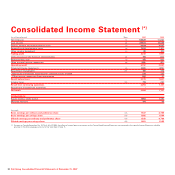 93
93 -
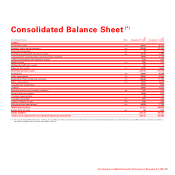 94
94 -
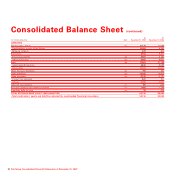 95
95 -
 96
96 -
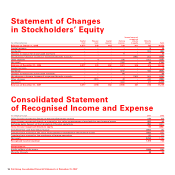 97
97 -
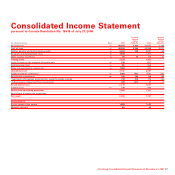 98
98 -
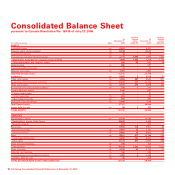 99
99 -
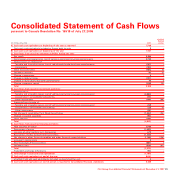 100
100 -
 101
101 -
 102
102 -
 103
103 -
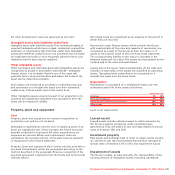 104
104 -
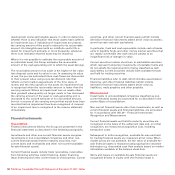 105
105 -
 106
106 -
 107
107 -
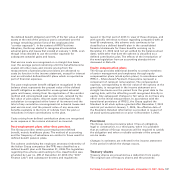 108
108 -
 109
109 -
 110
110 -
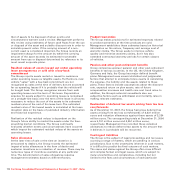 111
111 -
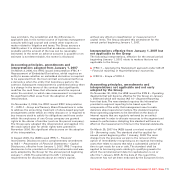 112
112 -
 113
113 -
 114
114 -
 115
115 -
 116
116 -
 117
117 -
 118
118 -
 119
119 -
 120
120 -
 121
121 -
 122
122 -
 123
123 -
 124
124 -
 125
125 -
 126
126 -
 127
127 -
 128
128 -
 129
129 -
 130
130 -
 131
131 -
 132
132 -
 133
133 -
 134
134 -
 135
135 -
 136
136 -
 137
137 -
 138
138 -
 139
139 -
 140
140 -
 141
141 -
 142
142 -
 143
143 -
 144
144 -
 145
145 -
 146
146 -
 147
147 -
 148
148 -
 149
149 -
 150
150 -
 151
151 -
 152
152 -
 153
153 -
 154
154 -
 155
155 -
 156
156 -
 157
157 -
 158
158 -
 159
159 -
 160
160 -
 161
161 -
 162
162 -
 163
163 -
 164
164 -
 165
165 -
 166
166 -
 167
167 -
 168
168 -
 169
169 -
 170
170 -
 171
171 -
 172
172 -
 173
173 -
 174
174 -
 175
175 -
 176
176 -
 177
177 -
 178
178 -
 179
179 -
 180
180 -
 181
181 -
 182
182 -
 183
183 -
 184
184 -
 185
185 -
 186
186 -
 187
187 -
 188
188 -
 189
189 -
 190
190 -
 191
191 -
 192
192 -
 193
193 -
 194
194 -
 195
195 -
 196
196 -
 197
197 -
 198
198 -
 199
199 -
 200
200 -
 201
201 -
 202
202 -
 203
203 -
 204
204 -
 205
205 -
 206
206 -
 207
207 -
 208
208 -
 209
209 -
 210
210 -
 211
211 -
 212
212 -
 213
213 -
 214
214 -
 215
215 -
 216
216 -
 217
217 -
 218
218 -
 219
219 -
 220
220 -
 221
221 -
 222
222 -
 223
223 -
 224
224 -
 225
225 -
 226
226 -
 227
227 -
 228
228 -
 229
229 -
 230
230 -
 231
231 -
 232
232 -
 233
233 -
 234
234 -
 235
235 -
 236
236 -
 237
237 -
 238
238 -
 239
239 -
 240
240 -
 241
241 -
 242
242 -
 243
243 -
 244
244 -
 245
245 -
 246
246 -
 247
247 -
 248
248 -
 249
249 -
 250
250 -
 251
251 -
 252
252 -
 253
253 -
 254
254 -
 255
255 -
 256
256 -
 257
257 -
 258
258 -
 259
259 -
 260
260 -
 261
261 -
 262
262 -
 263
263 -
 264
264 -
 265
265 -
 266
266 -
 267
267 -
 268
268 -
 269
269 -
 270
270 -
 271
271 -
 272
272 -
 273
273 -
 274
274 -
 275
275 -
 276
276 -
 277
277 -
 278
278 -
 279
279 -
 280
280 -
 281
281 -
 282
282 -
 283
283 -
 284
284 -
 285
285 -
 286
286 -
 287
287 -
 288
288 -
 289
289 -
 290
290 -
 291
291 -
 292
292 -
 293
293 -
 294
294 -
 295
295 -
 296
296 -
 297
297 -
 298
298 -
 299
299 -
 300
300 -
 301
301 -
 302
302 -
 303
303 -
 304
304 -
 305
305 -
 306
306 -
 307
307 -
 308
308 -
 309
309 -
 310
310 -
 311
311 -
 312
312 -
 313
313 -
 314
314 -
 315
315 -
 316
316 -
 317
317 -
 318
318 -
 319
319 -
 320
320 -
 321
321 -
 322
322 -
 323
323 -
 324
324 -
 325
325 -
 326
326 -
 327
327 -
 328
328 -
 329
329 -
 330
330 -
 331
331 -
 332
332 -
 333
333 -
 334
334 -
 335
335 -
 336
336 -
 337
337 -
 338
338 -
 339
339 -
 340
340 -
 341
341
 |
 |

Fiat Group Consolidated Financial Statements at December 31, 2007 - Notes102
Monetary assets and liabilities denominated in foreign
currencies at the balance sheet date are translated at the
exchange rate prevailing at that date. Exchange differences
arising on the settlement of monetary items or on reporting
monetary items at rates different from those at which they
were initially recorded during the period or in previous
financial statements, are recognised in the income statement.
Consolidation of foreign entities
All assets and liabilities of foreign consolidated companies
with a functional currency other than the Euro are translated
using the exchange rates in effect at the balance sheet date.
Income and expenses are translated at the average exchange
rate for the period. Translation differences resulting from the
application of this method are classified as equity until the
disposal of the investment. Average rates of exchange are used
to translate the cash flows of foreign subsidiaries in preparing
the consolidated statement of cash flows.
Goodwill and fair value adjustments arising on the acquisition
of a foreign entity are recorded in the relevant functional
currency of the foreign entity and are translated using the
period end exchange rate.
In the context of IFRS First-time Adoption, the cumulative
translation difference arising from the consolidation of foreign
operations was set at nil, as permitted by IFRS 1; gains or
losses on subsequent disposal of any foreign operation only
include accumulated translation differences arising after
January 1, 2004.
Intangible assets
Goodwill
In the case of acquisitions of businesses, the acquired
identifiable assets, liabilities and contingent liabilities are
recorded at fair value at the date of acquisition. Any excess of
the cost of the business combination over the Group’s interest
in the fair value of those assets and liabilities is classified as
goodwill and recorded in the financial statement as an
intangible asset. If this difference is negative (negative
goodwill), it is recognised in the income statement at the time
of acquisition.
In the absence of a specific Standard or Interpretation on the
matter, when the Group acquires a minority interest in
controlled companies the excess of the acquisition cost over
the carrying value of the assets and liabilities acquired is
recognised as goodwill (the “Parent entity extension method”).
Goodwill is not amortised, but is tested for impairment
annually or more frequently if events or changes in
circumstances indicate that it might be impaired. After initial
recognition, goodwill is measured at cost less any accumulated
impairment losses.
On disposal of part or whole of a business which was
previously acquired and which gave rise to the recognition of
goodwill, the remaining amount of the related goodwill is
included in the determination of the gain or loss on disposal.
In the context of IFRS First-time Adoption, the Group elected not
to apply IFRS 3 –
Business Combinations
retrospectively to the
business combinations that occurred before January 1, 2004; as
a consequence, goodwill arising on acquisitions before the date
of transition to IFRS has been retained at the previous Italian
GAAP amounts, subject to impairment testing at that date.
Development costs
Development costs for vehicle project production (cars, trucks,
buses, agricultural and construction equipment, related
components, engines, and production systems) are recognised
as an asset if and only if both of the following conditions are
met: that development costs can be measured reliably and that
technical feasibility of the product, volumes and pricing
support the view that the development expenditure will
generate future economic benefits. Capitalised development
costs include all direct and indirect costs that could be directly
attributable to the development process.
Capitalised development costs are amortised on a systematic
basis from the start of production of the related product over
the product‘s estimated life, as follows:
N° of years
Cars 4 - 5
Trucks and Buses 8
Agricultural and Construction Equipment 5
Engines 8 - 10
Components and Production Systems 3 - 5
